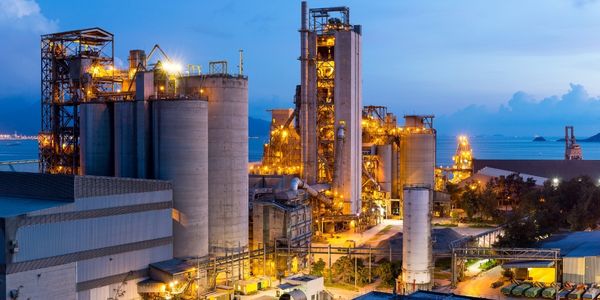Technology Category
- Application Infrastructure & Middleware - Database Management & Storage
- Infrastructure as a Service (IaaS) - Cloud Storage Services
Applicable Industries
- Buildings
- Cement
Use Cases
- Building Automation & Control
- Structural Health Monitoring
About The Customer
TRC Companies, Inc. is a publicly traded environmental and engineering consulting firm that provides integrated services to the environmental, energy, infrastructure, and real estate markets. The company is a leading provider of technical, financial, risk management, and construction services to commercial and government customers across the country. In this case, TRC was representing the owners of a steel storage building that was damaged during Hurricane Katrina. The challenge was to prove that the damage was caused by wind, not water, to ensure the insurance claim was paid.
The Challenge
A steel storage building located on a canal between downtown New Orleans and Lake Pontchartrain was damaged during Hurricane Katrina. The insurance company claimed that the damage, where the walls were pushed outward in two areas, was water-related. As the insurance only covered wind damage, the claim was denied. TRC Companies, Inc., representing the owners of the storage building, faced the challenge of proving that the damage was caused by wind, not water. The traditional approach of applying equations relating force and wind speed would not have included information about the building shape or accounted for the air flowing through open doors inside the building. TRC determined that a more accurate simulation of the pressure forces on the building would provide more persuasive evidence that the damage was wind-related.
The Solution
TRC used ANSYS Fluent software to build a model of the storage building along with two upwind structures that might have affected wind and turbulence fields. They used wind speeds and directions predicted by mesoscale meteorological model MM5 simulations of Katrina, corroborated by observations from National Hurricane Center reconnaissance devices, to set the inlet boundary conditions. They then simulated wind-induced net total pressures on all outside walls of the storage building. Using calculations from structural engineers, they calculated the forces needed to cause damage to the storage building’s steel walls. The predicted pressures on the building walls indicated two locations with outward forces strong enough to cause the observed damage. These two locations closely agreed with the actual damage.
Operational Impact
Quantitative Benefit

Case Study missing?
Start adding your own!
Register with your work email and create a new case study profile for your business.
Related Case Studies.

Case Study
Energy Saving & Power Monitoring System
Recently a university in Taiwan was experiencing dramatic power usage increases due to its growing number of campus buildings and students. Aiming to analyze their power consumption and increase their power efficiency across 52 buildings, the university wanted to build a power management system utilizing web-based hardware and software. With these goals in mind, they contacted Advantech to help them develop their system and provide them with the means to save energy in the years to come.

Case Study
System 800xA at Indian Cement Plants
Chettinad Cement recognized that further efficiencies could be achieved in its cement manufacturing process. It looked to investing in comprehensive operational and control technologies to manage and derive productivity and energy efficiency gains from the assets on Line 2, their second plant in India.

Case Study
Intelligent Building Automation System and Energy Saving Solution
One of the most difficult problems facing the world is conserving energy in buildings. However, it is not easy to have a cost-effective solution to reduce energy usage in a building. One solution for saving energy is to implement an intelligent building automation system (BAS) which can be controlled according to its schedule. In Indonesia a large university with a five floor building and 22 classrooms wanted to save the amount of energy being used.

Case Study
Powering Smart Home Automation solutions with IoT for Energy conservation
Many industry leaders that offer Smart Energy Management products & solutions face challenges including:How to build a scalable platform that can automatically scale-up to on-board ‘n’ number of Smart home devicesData security, solution availability, and reliability are the other critical factors to deal withHow to create a robust common IoT platform that handles any kind of smart devicesHow to enable data management capabilities that would help in intelligent decision-making

Case Study
Commercial Building Automation Boosts Energy Efficiency
One of the challenges to building automation is the multitude of non-interoperable communications protocols that have evolved over the years. Buildings have several islands of automation. Bridging the islands of different automation without losing the considerable investment in each specialized control network is the main focus in this solution.




